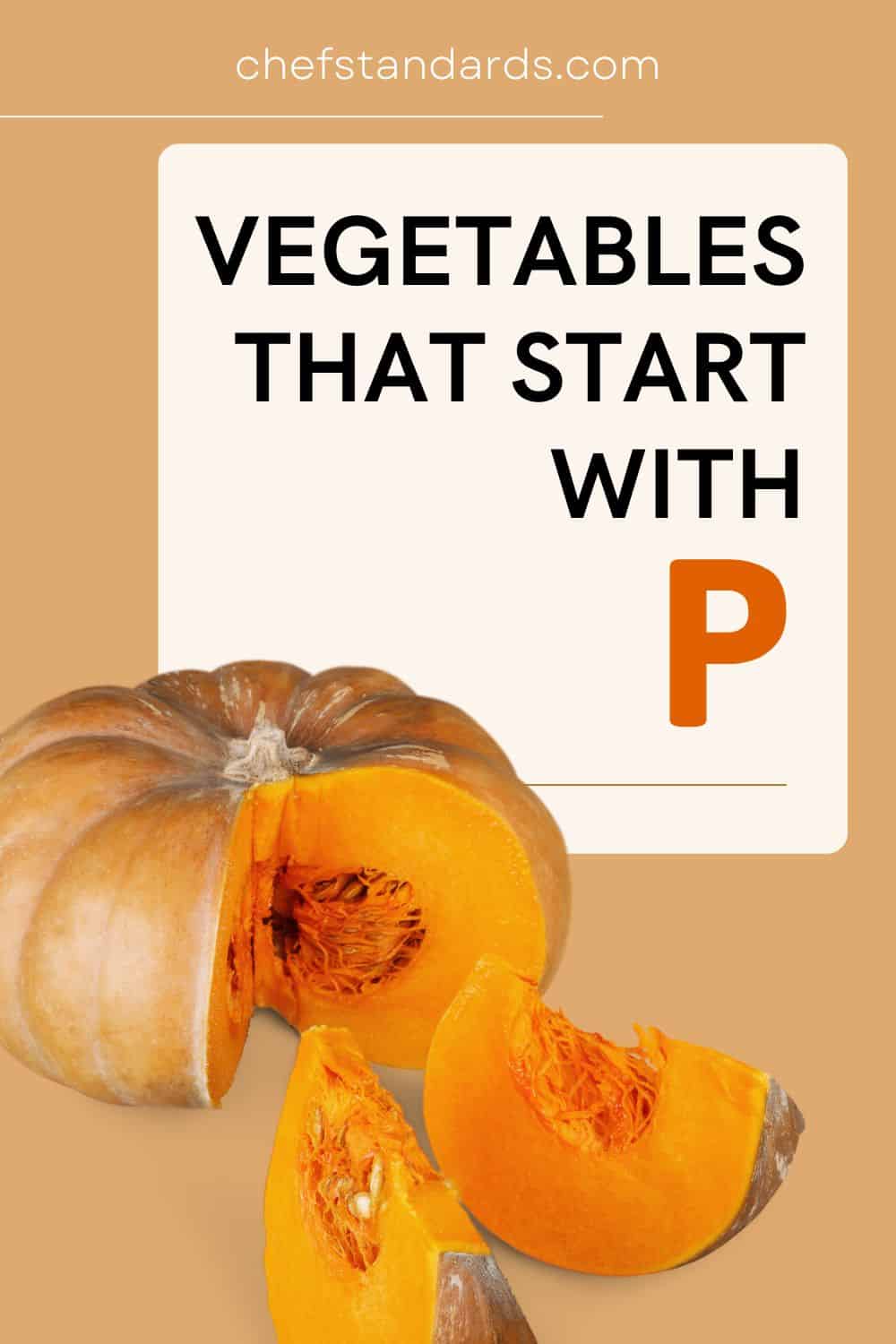Regardless of whether you’re looking for a little versatility in your life or you’re playing a guessing or word game, I’m sure this list of vegetables that start with P will come in handy to you.
The best of all is that you’ll also learn more about these vegetables, what they are, and where they grow. Enjoy!
27 Vegetables That Start With P
1. Potato
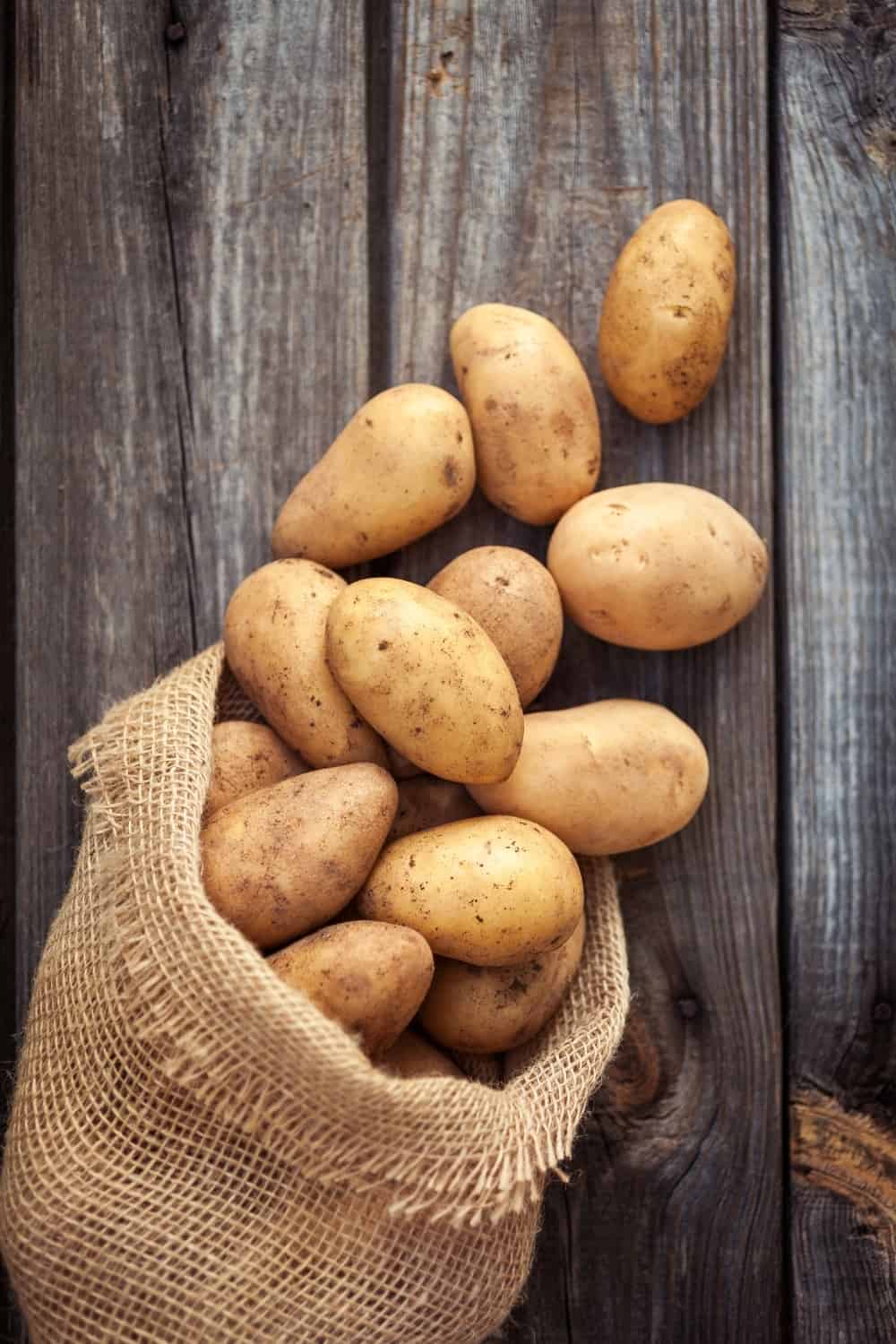
Potatoes are a staple in many cultures, and they are also the world’s most important vegetable crop. They are mostly boiled or baked, or mashed and fried to make chips and crisps.
DID YOU KNOW? There is nothing bad with eating potato skin, i.e. in some cases, it is even desirable because it contains more nutrients.
2. Pumpkin
Pumpkins are a type of squash that grow on vines. They are round and orange with a green stem. Pumpkins are used in pies, as decorations, and for carving into jack-o-lanterns.
FUN FACT: “Although we often think of pumpkins as vegetables, they’re actually fruits! Pumpkins, along with cucumbers, tomatoes, and avocados, come from the flowers of their plants. That makes them all fruits.” (1)
3. Pickle

Pickles are cucumbers that have been soaked in a vinegar or brine solution. The pickling process causes the vegetables to release their own natural sugars and become soft and sour.
4. Paul Robeson tomato
The Paul Robeson tomato is a variety of tomato that was developed in the early 1990s by Rutgers University Agricultural Experiment Station. This variety of tomatoes became popular and spread throughout the United States.
5. Parsley
Parsley is a biennial herb which leaves are used in cooking. It is native to the Mediterranean region and has been cultivated for over 2,000 years. Parsley can be grown in any climate zone as long as it has a cool season with cold nights.
Parsley can be used in a numerous types of dishes, including grilled meats, pasta salads, tomato-based sauces, pot roast or beef stews, and so on.
6. Peppers

Peppers are usually green, red, or yellow in color and have a spicy taste. Peppers can be eaten raw or cooked, and they are used in sauces, soups, and stews. Chili peppers are widely used to make hot sauces.
When it comes to pepper classification, they are technically fruits, but in the culinary world, they are considered vegetables.
DID YOU KNOW? The scientific name for bell peppers is Capsicum annum. (2)
7. Pinto beans
Pinto beans are also known as “Mexican beans” or “kidney beans.” The name comes from the Spanish word pinta, which means speckled.
They are often used in Mexican dishes and can be found in many grocery stores. Pinto beans are one of my favorite vegetables that start with P.
8. Parsnip
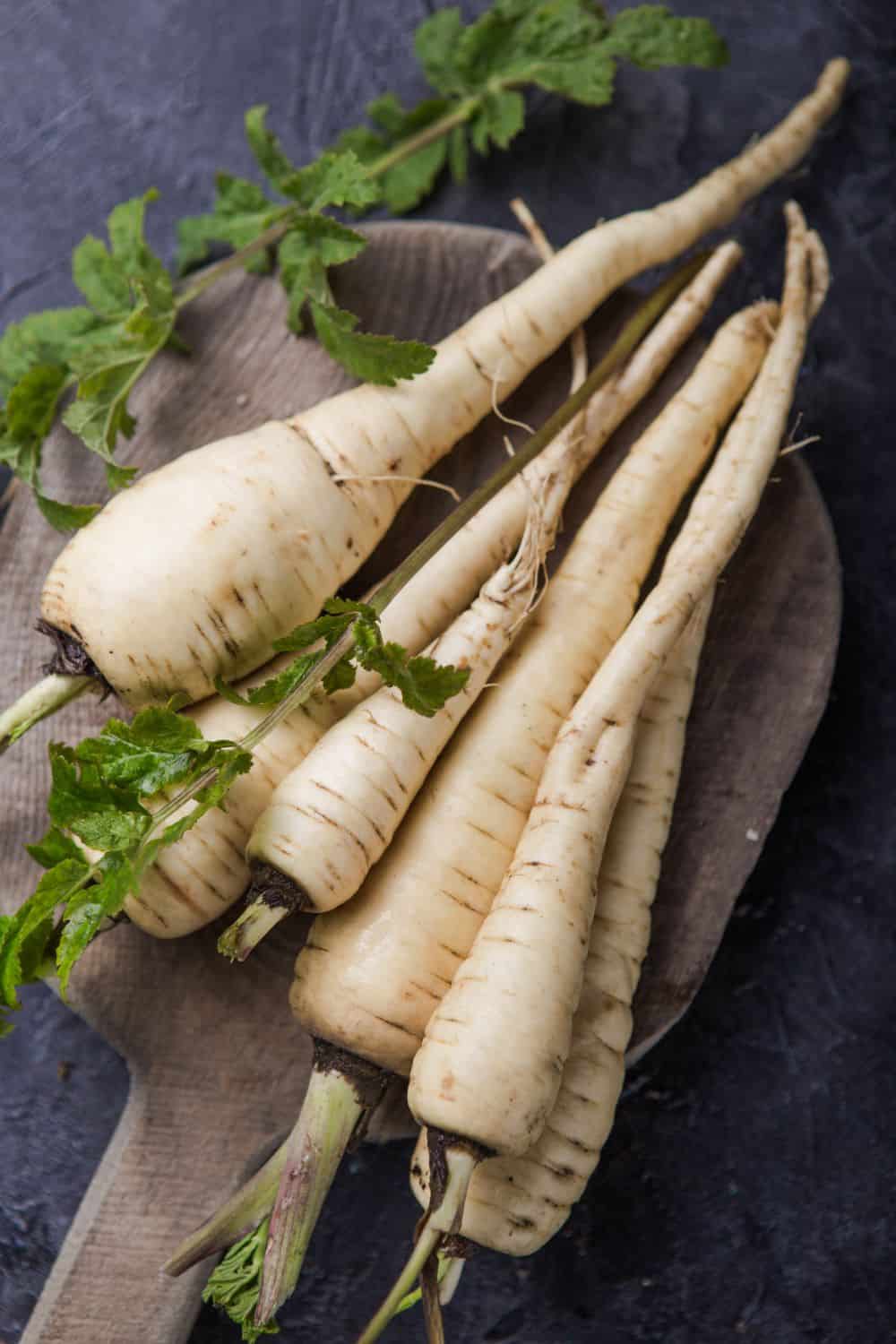
Parsnip is a type of root vegetable that has been grown for centuries. The plant is related to the carrot, fennel, and parsley family and has a long, white taproot tuber.
See also: Vegetables That Start With C: 41 Considerable Choices
9. Prairie turnip
Prairie turnip is found in the Great Plains region of the United States, where it is often mistaken for wild radish. It is a biennial plant that grows as an herbaceous plant during its first year.
Here’s an interesting prairie turnip fact by Health Benefits Times: “Native Americans were the first one to utilize the Prairie turnip as a food medicine. The roots were used to cure gas related pains, sore throat and ease fractures and sprains.”
10. Pak choy
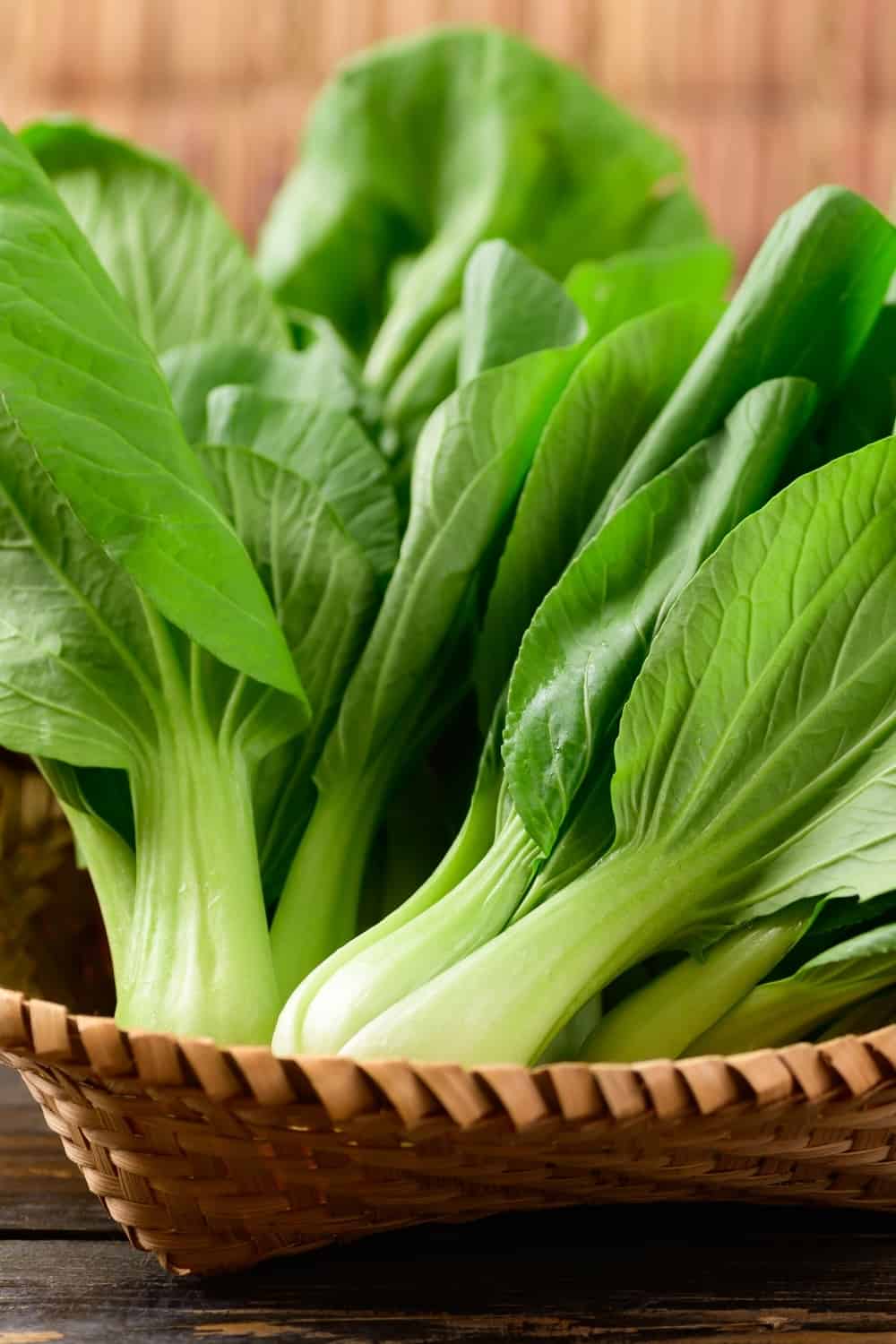
It is also called bok choy, or white cabbage. It can be eaten raw as a salad or cooked as a vegetable side dish.
The name “pak choi” comes from Cantonese and translates to “white vegetable.” This green vegetable is also known as Chinese cabbage.
The flavor of bok choy can be described as somewhat mineral with a slight bitterness.
11. Pole beans
Pole beans are a type of legume that grows on a vine. They are usually harvested when they are young and tender.
PRO TIP: They taste best when they’re soaked in water for an hour before cooking. You can also add them to salads or stir-fries for added flavor and nutrition.
12. Potato onion
This is a starchy onion with the color of a sweet potato. This type of onion has a long history in the world of cooking.
It is used as an ingredient for many different dishes because its strong flavor goes well with a wide array of food.
13. Pignut

Pignut is similar to leek, zucchini, and artichoke and is full of potassium and vitamin C. It is also called earthnut or groundnut. They are edible seeds found in the underground stems of plants in the Arachis genus.
14. Persian cucumber
Persian cucumbers are an elongated variety of cucumbers with bumpy and crunchy skin. These cucumbers can be eaten raw or cooked. They have a slightly sweeter flavor than other varieties of cucumbers.
“Persian cucumbers are a source of fiber to regulate the digestive tract, vitamin C to strengthen the immune system, and potassium to balance fluid levels within the body.” (3)
15. Pink bean
Pink bean is a type of sweetened azuki bean paste used to make a variety of desserts in East Asia. It is made by boiling milled azuki beans with sugar and other ingredients, such as soy sauce or salt.
16. Pink boar tomato
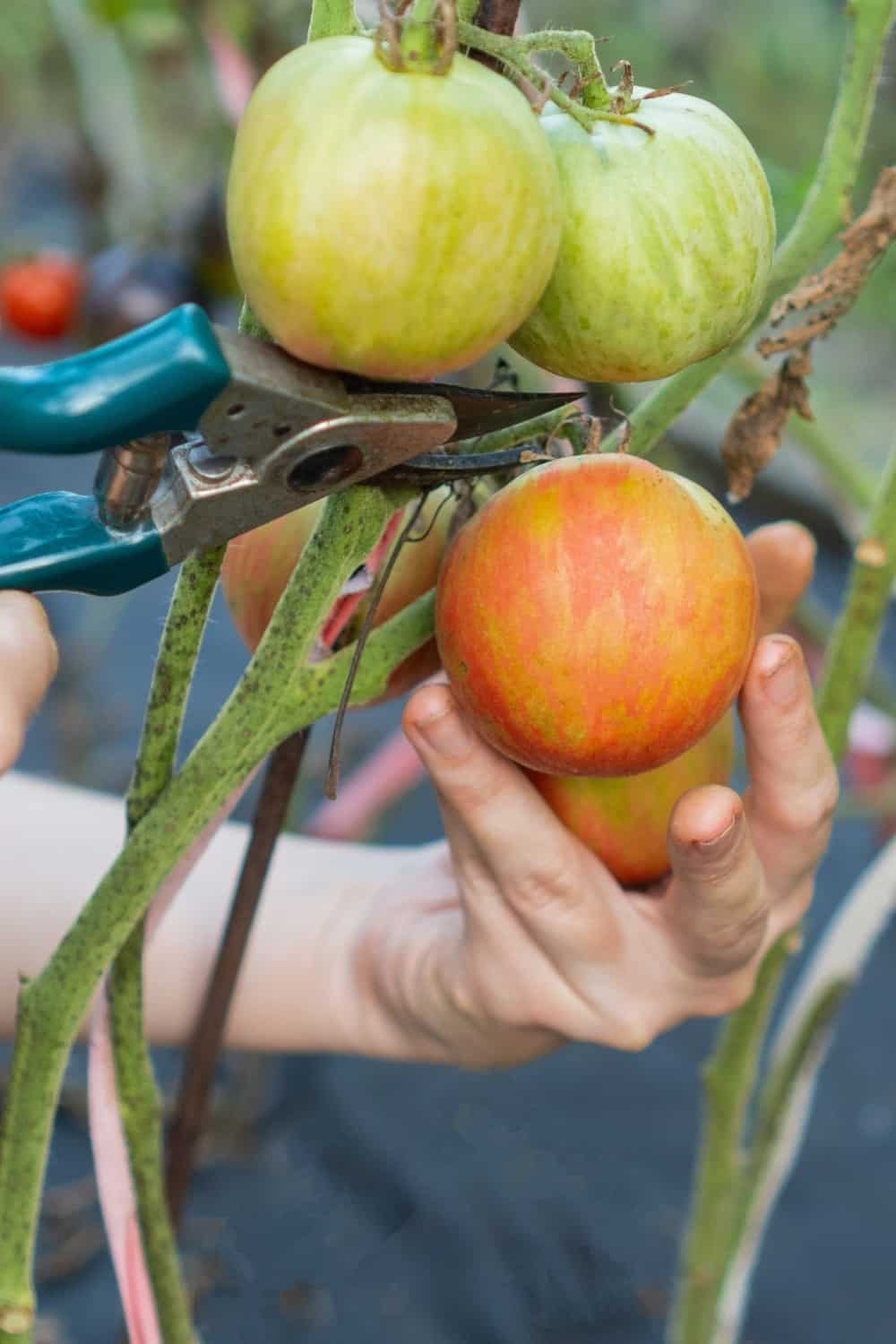
The pink boar tomato is a type of tomato that has pink-colored skin and flesh. It was first introduced in the late 1800s, but it became popular in the early 1900s. The pink boar tomato is classified as an heirloom variety and is not genetically modified.
See also: 13 Vegetables That Start With N: New Ideas For Your Kitchen
17. Plum tomato
Plum tomatoes are a variety of tomatoes that are often used in salads and pasta dishes. They are smaller than other types of tomatoes and have a rounder shape.
18. Pokeweed
Pokeweed can be found in moist, shady areas, and it has purple or black berries. Pokeweed has been used as a traditional medicine for centuries. The roots, stems, and leaves have been used to treat various ailments like arthritis and constipation.
Here’s an interesting fact about pokeweed by Verywell Health:
“Even though pokeweed is known to be poisonous to humans and other mammals, some herbalists believe it can be used safely. Unfortunately, though, there hasn’t been much research into pokeweed’s medicinal properties or its safety.”
19. Pursley
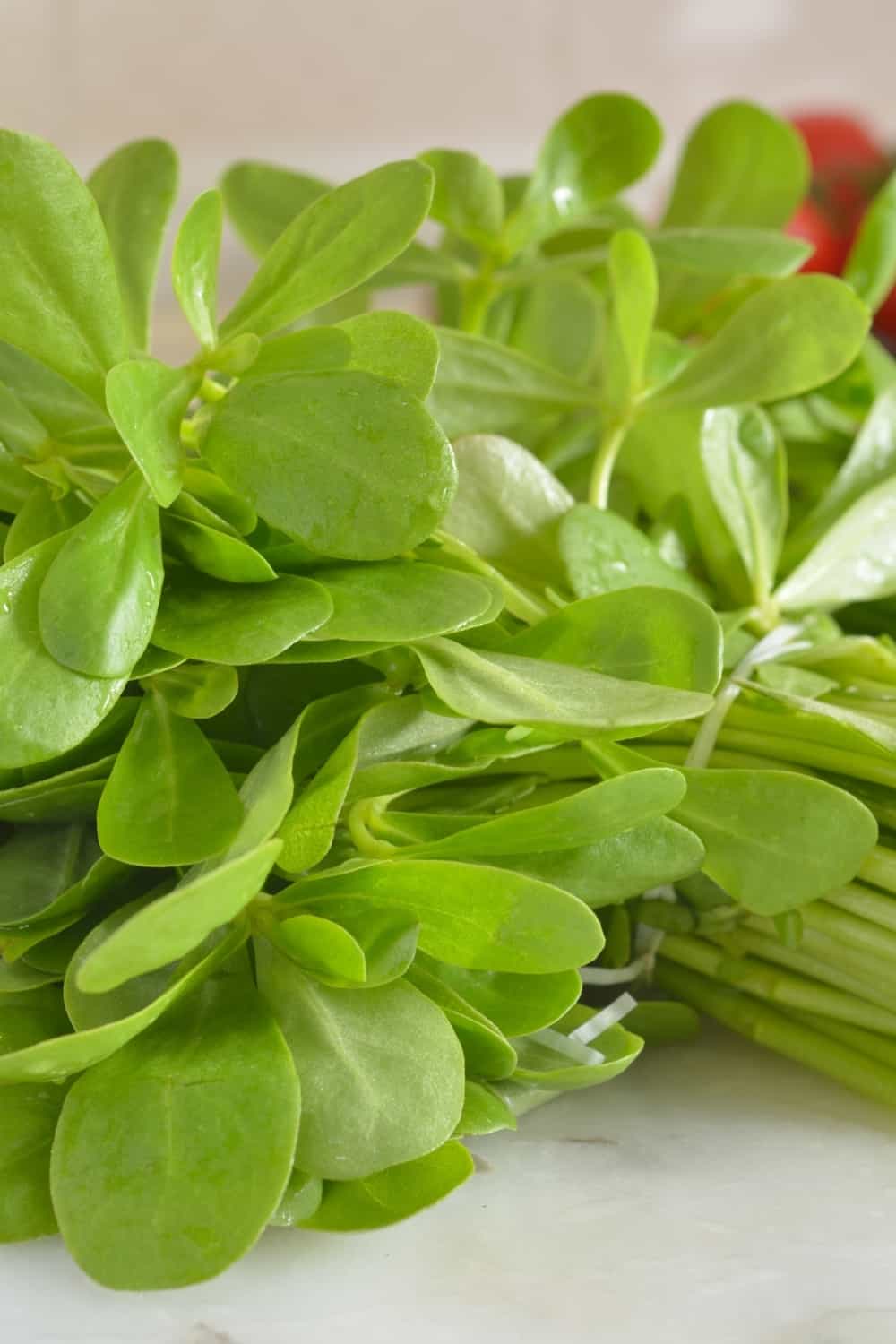
The Pursley vegetable is a type of green leafy vegetable that has many health benefits. It contains high levels of fiber and vitamin A, C, and K. Pursley is famous for its anti-inflammatory properties.
20. Paracress
Paracress is a cross between parsley and cress, and it’s not widely known in the United States. This vegetable has a peppery flavor and can be used as an herb or a spice.
21. Pearl onion
Pearl onions taste and smell like regular white or yellow onions but have a smoother texture when cooked. They do not have much flavor on their own, so they are often used in dishes that call for chopped onion.
“Pearl onions contain chemical compounds that have health benefits including helping cardiovascular health and stabilize blood sugar levels, and acting as an antioxidant and anti-inflammatory.” (4)
22. Prussian asparagus

Asparagus is a plant in the lily family. It is native to most of Europe, Northern Africa, and Western Asia. Prussian asparagus is a variety of asparagus that was first grown in the Prussian region of Germany. They are still popular in Germany today.
In general, the flavor of asparagus is somewhat similar to the taste of artichokes, i.e. mildly earthy and slightly bitter.
23. Pigeon pea
Pigeon peas are a legume and are popular in Indian cuisine. They can be used in soups, curries, and dals. Pigeon peas are also a staple food for the Caribbean, African, and Asian people.
24. Persimmon
Persimmons can be eaten as a snack or used to make desserts like pies, tarts, and cakes. They can also be added to smoothies or salads for added flavor and nutrition.
25. Purple potato
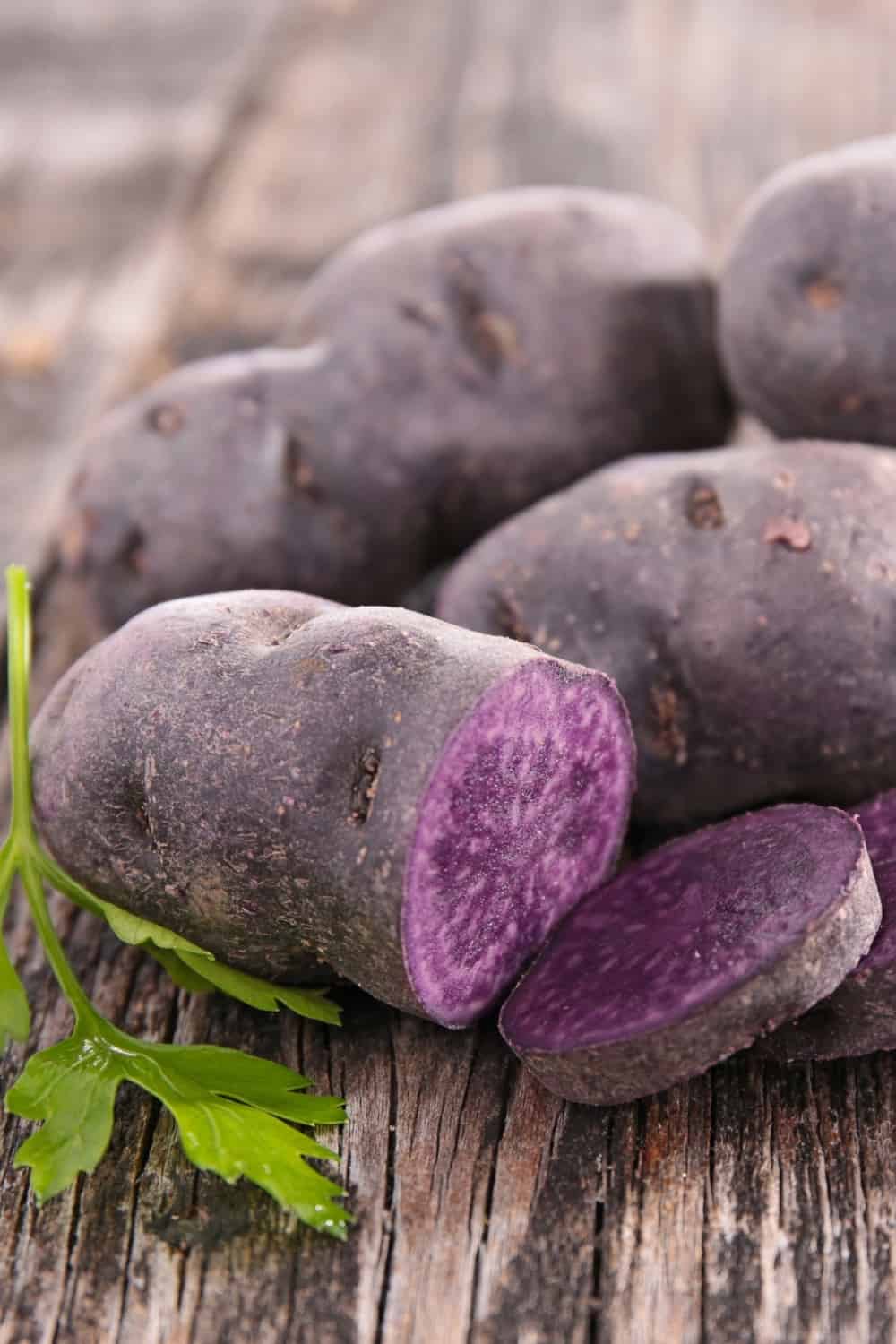
Purple potatoes are not genetically modified but they are a naturally occurring potato mutation. Because of this mutation, purple potatoes are purple instead of white or yellow. They also have a sweeter taste than regular potatoes.
26. Purple asparagus
Another of my favorite vegetables that start with P is the naturally occurring purple asparagus. Purple asparagus has many health benefits, and it is an excellent addition to any diet.
Not only does it have antioxidants, but it also has many minerals such as potassium, copper, manganese, and selenium.
27. Peas
Peas are a type of legume also known as Pisum. Green pea is the most common type of pea. They are grown in many parts of the world, but they originated in Central Asia. They are a good source of protein, vitamins, minerals, and fiber.
Know Your P Vegetables
Congrats, now you know at least ten vegetables that start with P! I’m sure you’ll be the winner of any guessing or word game.
You’re welcome. Enjoy the rest of your day!
[sp_easyaccordion id=”5012″]
